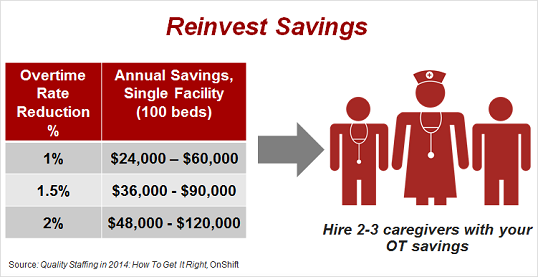I've been keeping my eye on the government’s efforts to potentially increase the federal minimum wage, which could rise to $10.10/hour. After all, shift-based workers make up the majority of the workforce in long-term care and senior living.
The impact of higher wages could be significant for the workers themselves, offering an economic boost that’s hard to argue is not desperately needed. It could also make a big impact to employers in senior care, many of whom are struggling with margins so slim that they can barely stay afloat.
But in addition to the potential increase in minimum wage, there is another issue to this paradigm that recently surfaced. Earlier this month, President Obama signed a presidential memorandum “directing the Labor Department to devise new overtime rules that would make more workers eligible for time-and-a-half pay for their extra hours of work.” This could potentially mean overtime pay for more workers – salaried workers. It’s already estimated that over 3 million salaried workers could benefit from this push.
Whether or not the minimum wage or overtime push comes to fruition, it’s clear that employers in senior care need to pay close attention to the hours their employees work. But, reviewing hours worked based on payroll reports is not necessarily a best practice for managing future outcomes. The reports themselves are historical in nature, when it’s too late to take corrective action.
That’s why the team at OnShift has been focused on predictability-- giving your communities tools to identify potential issues like staff overtime costs or unnecessary extra worker hours, so adjustments can be made to prevent them from occurring while still managing staff to deliver quality care. Predictive analytics are foundational to our staffing and labor management software and services. The predictability is not exactly a crystal ball, but it does provide important data for decisions that can impact future hours, shifts and costs incurred by your workers.
With wage and overtime rules potentially changing, now is the time to make sure your communities’ efforts in overtime control and employee scheduling are in top shape. Even small improvements to what you’re doing can add up to significant savings. These are savings that could be reinvested in other areas of your operations that can make a big difference to quality improvement.

Additional resources